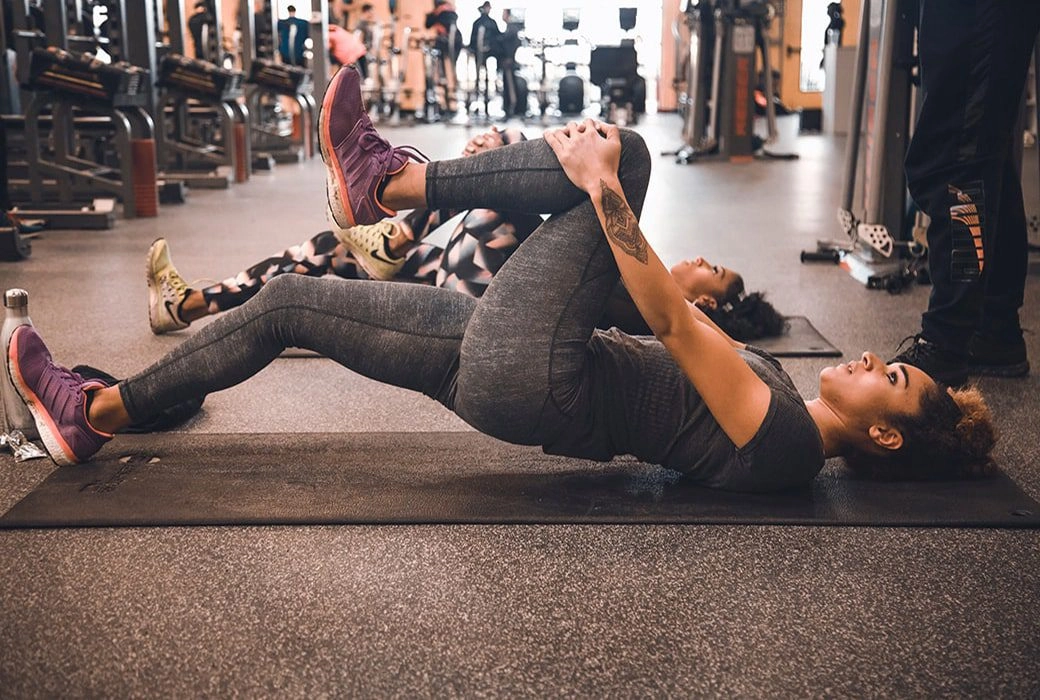Physical therapy exercises, as your Anchorage chiropractor can tell you, are a great approach to holistic healing and wellness, no matter your physical condition. Many people look to physical rehab after an injury or traumatic incident like a car crash to get them back on their feet, but it’s also great for people who just need a little more support in order to get moving and live their lives more fully.
Physical therapy exercise is great for regaining or improving overall physical performance, incorporating everything from exercise to stretching to muscle strengthening. It’s also a very individual process, in which your physical therapist works with you to track your progress, makes adjustments for your comfort and needs over time, and tailors the experience to your goals.
If you’re interested in starting a rehab program, you might be curious about some of the exercises your tech may have you do. While every patient is unique, and each treatment regimen is personalized for their needs and goals, there are a few common exercises that you can look into beforehand. They’re outlined below, along with some general information about physical rehabilitation therapy. Get reading, and get on the road to recovery!
Anchorage Chiropractor Explains: Physical Therapy Type Exercises
Consultation
When you first show interest in starting a regimen, you’ll sit down and have a consultation with your Anchorage-based chiropractor or physical therapist before anything else. This is imperative to making sure you receive the best treatment, and that the exercises in your regimen are the well-suited to you.
The consultation will involve an evaluation of the patient’s movement tendencies, body type, lifestyle and activity levels, and physical capabilities. This will give the therapist a comprehensive sense of where you are, so they can best determine how to get you to where you want to be.
After you speak with them about your goals and the evaluation is done, they may develop a customized exercise regimen for you with unique movements and practices that will relieve pain while increasing flexibility and strength. The frequency, intensity, and exercises themselves will be based on your consultation and evaluation. It may involve muscle strengthening, stretching, aerobic exercise, or other modalities. Sometimes, as the patient starts with the exercises, they may have to be adjusted or taken out of the regimen entirely if they don’t work for the patient. It’s an ongoing process for both the patient and the physical therapist to find the exercises that work best.
Muscle Groups
Most people who come in for physical therapy at a chiropractic clinic are there to strengthen their core muscles in order to better support their spine and prevent further injury or pain. There are three primary muscle groups that physical therapists work within their spinal care regimens to give their patients the best exercise routines:
- Extensors are the back and glute muscles. Strengthening these help with proper posture, allows you to lift better, and allows your thighs to move away from your body. Many times, the glute and hip extenders need a decent amount of stretching before they can start to be strengthened. Back extensor muscles are extremely important to keep strong because they help with range of motion.
- Flexors are a group of abdominal muscles that support the spine from the front of the body. They help carry much of your body weight, so keeping them strong can relieve a lot of pain in the rest of your body. They control the lumbar region as well, which is a major source of pain for many patients.
- Obliques/Rotators are on the sides of your core and help to stabilize the whole area. They’re also important for proper posture, spinal curvature, and help rotate the spine (and entire trunk of the body) when needed.
These muscle groups are usually what chiropractors or physical therapists focus on in order to keep the spine strong, healthy, and in line. They also usually don’t get much attention or use in everyday life, so it’s important to keep them active in a setting like physical therapy, especially as we age, in order to prevent damage to the area.
When physical therapists or chiropractors, here in Anchorage and elsewhere, are developing exercise regimens, they typically focus on two groups of exercise categories that support the different muscle groups outlined above. The two groups are called McKenzie Exercises and Lumbar Stabilization Exercises.
McKenzie Exercises
These exercises are focused on extending the spine. They support and stretch the extenders, and are usually oriented toward pain relief and stretching rather than strengthening, especially at the beginning of the patient’s regimen. Many patients have experienced a lot of pain in this area, as they’re usually reserved for people who have had collapsed discs, degenerative diseases, herniated discs, or sciatica. All of these conditions come with inflammation, so by extending and stretching this area of the body with gentle McKenzie exercises, that pressure and inflammation can be reduced. The upper back is prioritized in this group.
Lumbar Stabilization Exercises
The other group of exercises focuses on the other two groups, flexors, and rotators. These exercises are aimed at strengthening the muscles around the spine in order to properly support it and keep it in line. Most of the exercises in this group have the patient maintain a neutral spine while performing the exercises to strengthen the muscles in their proper setting and keep the spine properly aligned. In theory, when done regularly and repeatedly, muscle memory kicks in and the spine can support itself in a healthy way over time. The lower back and lumbar regions are prioritized in this category.
Best Physical Therapy Type Exercises According to Your Local Anchorage Chiropractor
With all of that in mind, here are some of the most common, yet most effective, stretching and strengthening rehab exercises.
Hamstring Stretch
Lay on your back with knees bent and feet on the floor. With a neutral spine, slowly straighten one leg and lift it toward the ceiling while grabbing the back of the thigh with both hands for support. Hold for about 20-30 seconds, slowly lower down to starting position, and repeat on the other side. Repeat each side three times.
Pelvic Tilt
This one is a bit more active than the hamstring stretch. Lay on the floor with knees bent and feet on the floor again. Tighten your core muscles and lift your lower back off of the floor while engaging your glutes. Hold for about 10 seconds, and repeat 3 times. This exercise is great for strengthening the lower back area.
Arm/Leg Raises
Finally, arm and leg raises are great for strengthening the upper neutral spine and engaging hip flexor muscles. Lie on one side with your inactive arm bent under your head and your upper arm resting on the floor near your chest. Bending both knees, raise the upper leg about 8 inches, and then lower it back down to meet your other leg. Repeat 5 to 10 times, and repeat on the other side.
Benefits of Physical Therapy Type Programs
Therapy, on a very basic level, is a specialized form of health care that is focused on muscle healing, repair, and recovery. It restores strength in your body, allowing you to live life the way you want to – healthy and strong! Some of the many benefits of embarking on this journey include:
- Increased flexibility
- Increased muscle strength
- Pain relief
- Reduced chance of re-injury
- Better posture
- Overall health improvements and bodily function
Of course, the road to recovery isn’t always easy or rewarding. Getting to a place where you feel entirely healed, recovered, and strong takes time, patience, and diligence. And it’s important to remember that along the way, there may be setbacks, periods of discomfort, and other obstacles. Don’t hesitate to share any and all of this with your physical therapist, as they’re here to help you get to a place you feel comfortable with. Millions of people across the country benefit from this type of care, why not you?

Why Better Health?
If you’re specifically looking for physical therapy modality technicians in Anchorage, our offices stand apart from the rest because of our multidisciplinary approach. Better Health has a chiropractor, physical therapy modality technicians, massage therapists, and more all under one roof. All the doctors work very closely together, consulting about best practices and treatments for patients. In this way, for example, if you start your treatment and it becomes evident that you need some spinal adjustments on top of muscle recovery, you won’t even have to leave the building to get what you need.
We put patients first, offering long hours, a same-day promise if you call before 4 p.m., and a no more than 10-minute wait time at the office. After a quick appointment and the help of their trained staff, you’ll be back on your feet in no time.
Final Thoughts
If you’ve been hesitating to commit to a physical therapy-type exercise regimen, schedule a consultation at Better Health Chiropractic here in Anchorage and see all the benefits it could have for you. Hopefully, this overview gave you a good overview of what to expect from our programs and the exercises they offer, and you can get on the fast track to recovery and strength!










